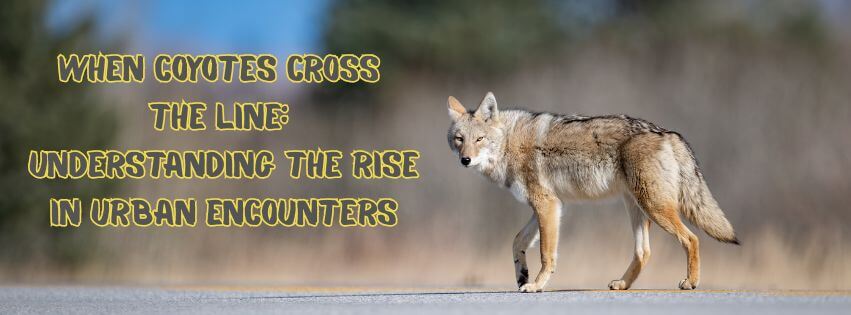Understanding the Rise in Urban Coyote Encounters
In recent months, communities across the U.S. have reported a troubling uptick in coyote attacks, sparking concern among residents, wildlife officials, and pet owners alike. Once considered elusive and shy, coyotes are now appearing in broad daylight, stalking pets, and in rare cases, even biting humans.
Coyotes have long adapted to urban environments, but sightings in places like Seattle’s Loyal Heights, Ballard, and Ravenna neighborhoods have become more frequent and brazen. Residents describe coyotes roaming playgrounds at dawn, snatching pets off leashes, and even biting people. We have, unfortunately, seen all of these scenarios through our clinics and Urgent Care service in the past several months.
Why the Sudden Surge?
- Food availability: Overflowing trash bins, outdoor pet food, and bird feeders attract coyotes providing easy and abundant meals.
- Habitat loss: As urban sprawl continues, natural habitats shrink, pushing wildlife further into residential zones in search of food.
- Human habituation: Coyotes lose their natural fear of humans when people intentionally feed them or are complacent about their presence, leading to bolder behavior.
Staying Safe: What You Can Do
- Never feed coyotes — intentionally or accidentally. This includes leaving pet food or fallen fruit outdoors.
- Keep pets indoors at night and supervise them closely outdoors, not just during dawn and dusk but any time of day. Leash your dogs and keep cats indoors or confined to catio structures.
- Secure trash and compost bins with tight-fitting lids or bungee cords to prevent coyotes from accessing food waste.
- Haze coyotes that approach you. Make yourself appear large, make loud noises (shout, clap, blow a whistle), and wave your arms. You can also throw small objects in their direction (not to hit them, but to scare them off). Do not run away, as this can trigger their chase instinct.
- Educate yourself and your neighbors on coyote behavior and safety measures to ensure a consistent approach to coexistence.
What if your pet is attacked?
- Prioritize Your Safety: Do NOT put yourself in harm’s way in an attempt to save your pet. Your safety comes first. You will be limited in your ability to help your pet if you are hurt. If the coyote is still present, try to scare it away with loud noises and by making yourself look big.
- Separate and Secure Your Pet: Once the coyote has left, safely retrieve your pet. If they are small enough, gently pick them up. For larger, potentially injured pets, try to encourage them to move to a secure area or use a blanket as a stretcher if they cannot walk. Be aware that even the most docile pet may bite due to pain and fear.
- Assess your Pet’s Injuries: While your priority is usually to get to a vet, a quick visual assessment can help you describe the situation. Due to the nature of coyote attacks, even pets that seem okay may be suffering from less obvious injuries that can become life threatening, and it is always best to seek care promptly.
- Contact your veterinarian or emergency veterinary practice. Let them know your pet has been attacked and describe the injuries of which you are aware. Green Lake Urgent Care offers emergency care for incidents like these Monday through Friday from 8 AM until 6 PM. There are several great emergency veterinarians in the area as well.
Report Coyote Encounters
- For immediate public safety concerns or if a coyote attacks a person, call 911 immediately.
- For dangerous incidents, attacks on supervised pets (like leashed dogs) or backyard poultry, or if you witness an injured or dangerous animal, report it to WDFW Police officers by calling 360-902-2936 , emailing WILDCOMM@dfw.wa.gov, or report online using the WDFW Wildlife Health Reporting Form. This helps wildlife officials track coyote behavior, identify problematic animals, and implement appropriate management strategies.
- You can also view and report non-threatening coyote sightings on the Carnivore Spotter map.
Living with Coyotes — A New Reality?
For many, the idea of coyotes in the city feels unnatural or alarming. However, urban ecologists increasingly view coyotes as integral, albeit sometimes challenging, components of urban ecosystems. They can play a beneficial role in controlling populations of other urban wildlife, such as rodents, rabbits, and even overabundant deer and Canada geese, which can themselves become nuisance species or vectors for disease. By preying on these animals, coyotes contribute to a more balanced and healthier urban environment. Their presence can also reduce the reliance on chemical pest control methods. As coyotes become more common in cities, some experts argue we must learn to coexist. But coexistence doesn’t mean complacency. Awareness, prevention, and swift reporting are key to keeping communities safe.

